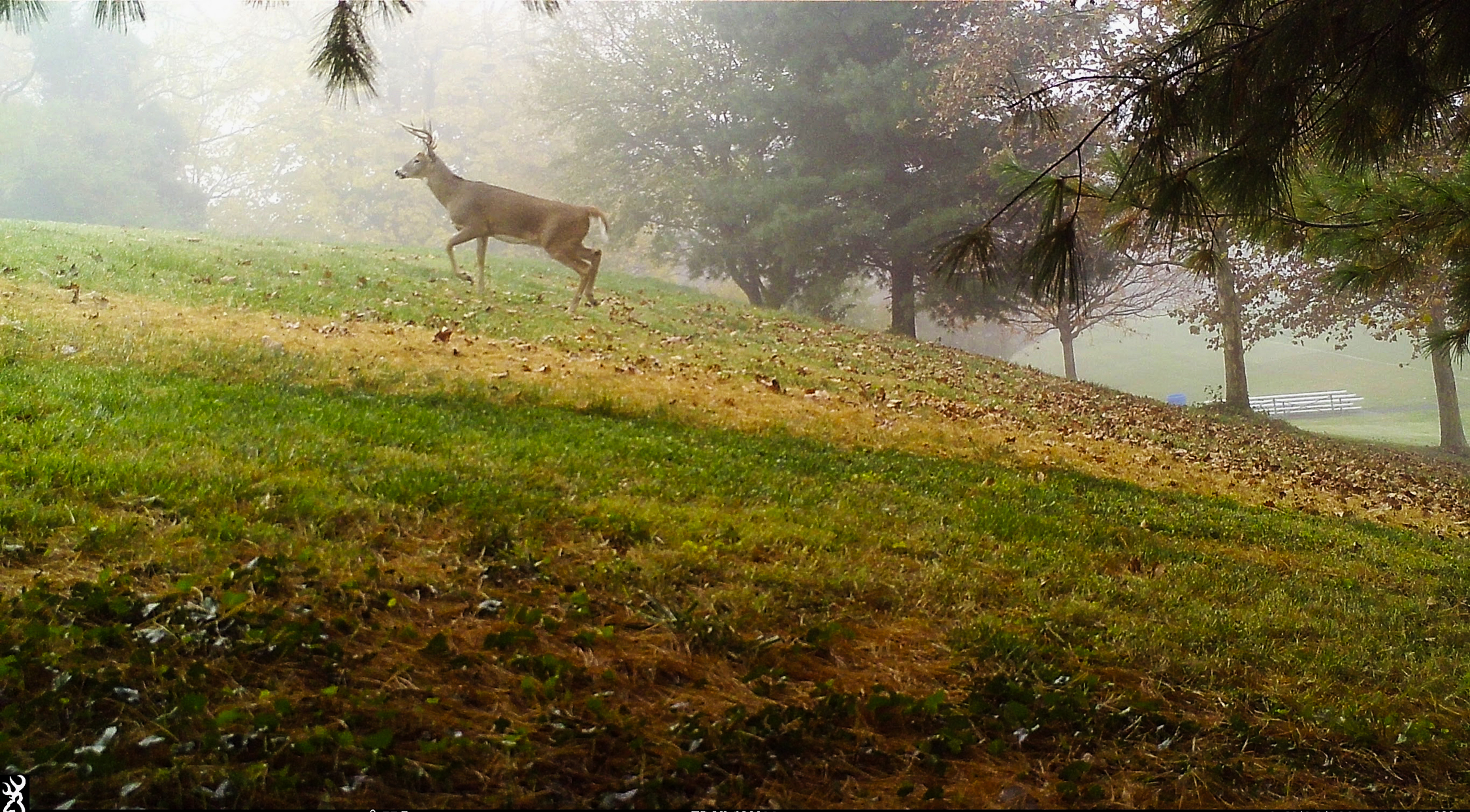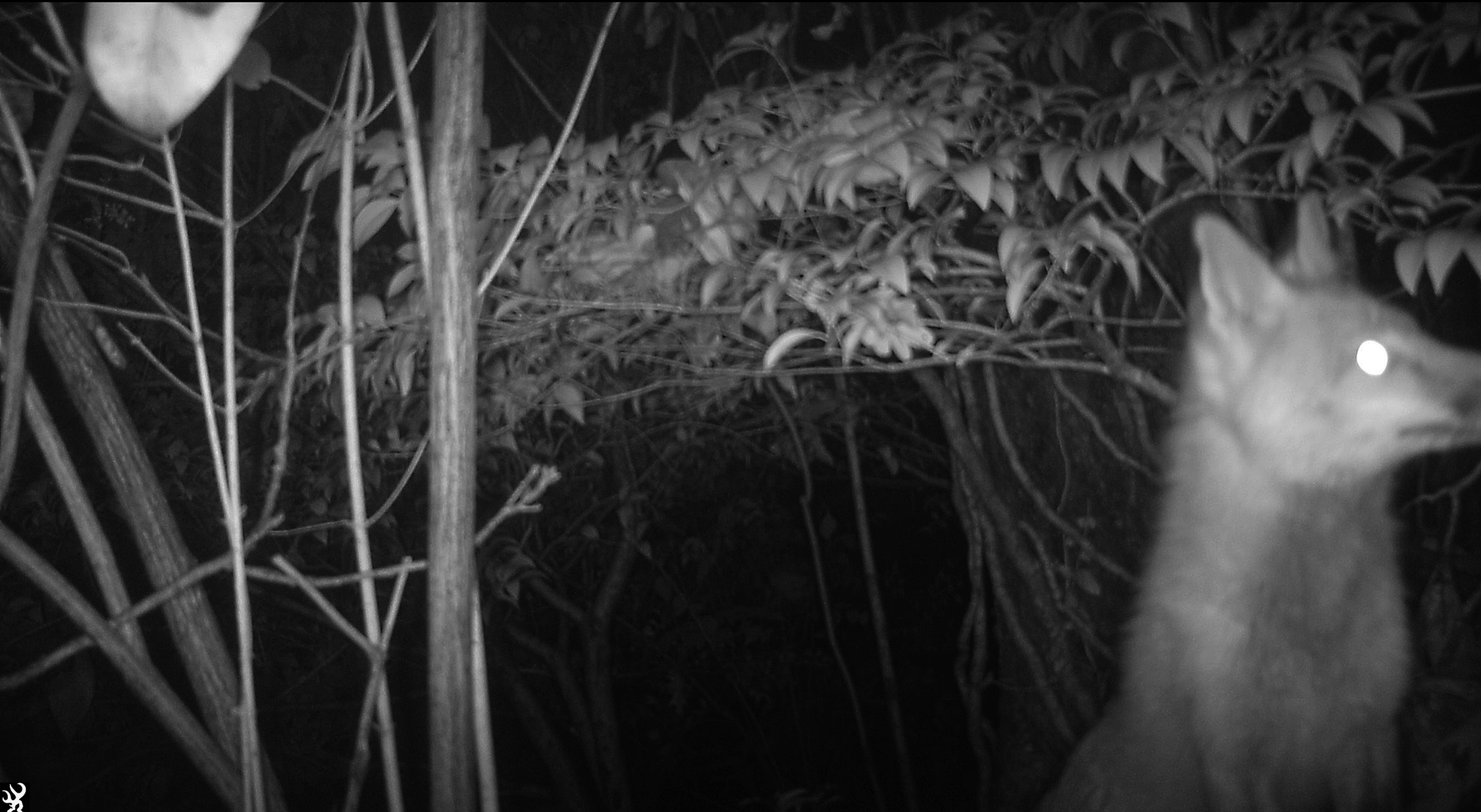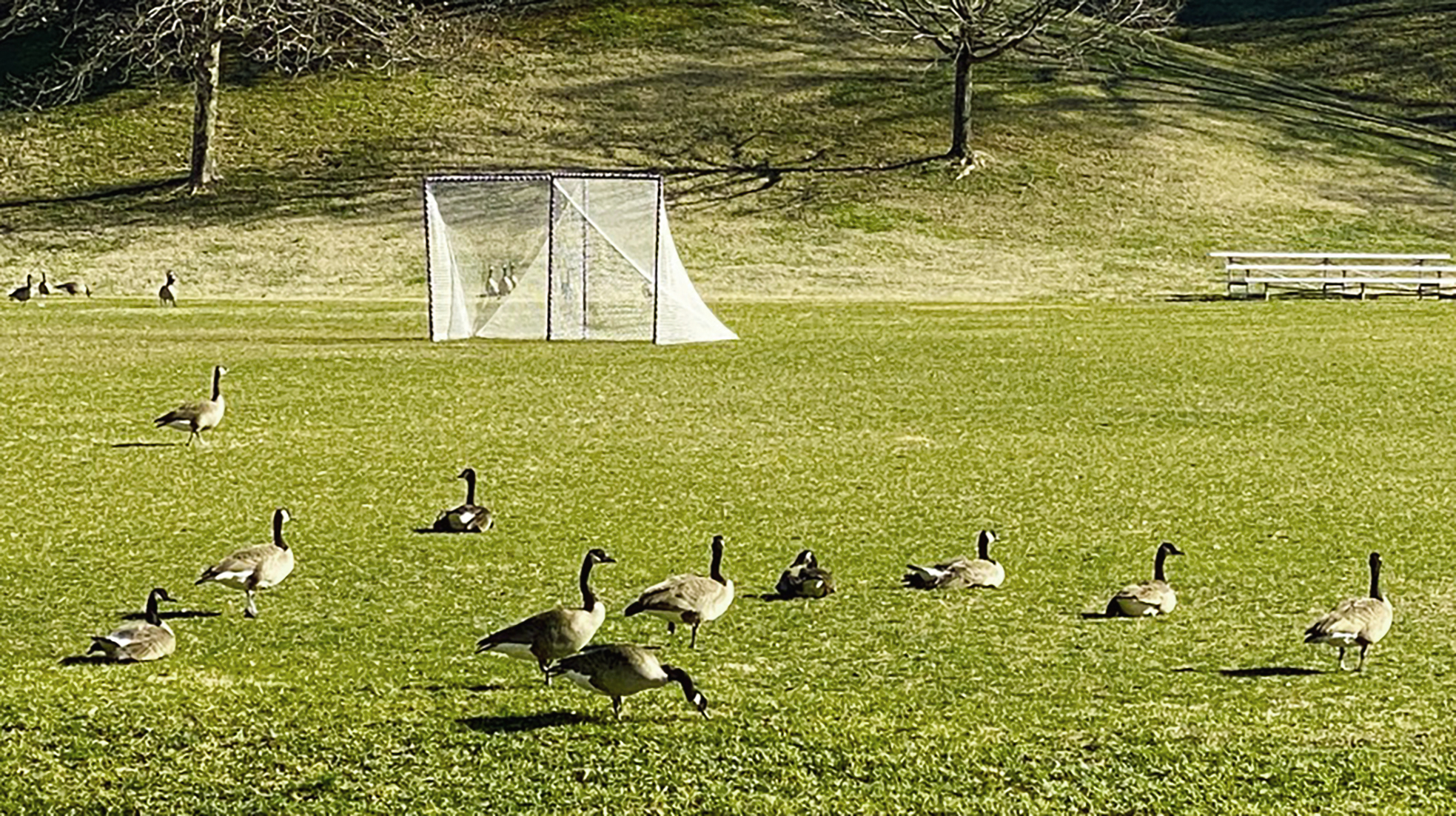
By Genesis Bu-Chinchilla
Trinity Times Correspondent
Trinity Washington University regularly hosts an unusual group of visitors near Cuvilly Hall: a herd of white-tailed deer and a lone fox.
According to student residents, wildlife sightings have become increasingly common on campus.
Cinthya Calderon-Hernandez, president of the Butterfly Network club and a junior studying global affairs and political science, has frequently encountered the deer seemingly enjoying the night breeze.
Surprised by the sightings at first, Calderon-Hernandez eventually figured out the deer were not bothered by her presence. They simply stared back in apparent curiosity.
Trinity Times recently created a picture submission form on Instagram, inviting students to share their wildlife encounters.
Multiple students responded, sharing their close encounters of the furry kind.
Among the photos submitted, one fox stood out.
“I haven’t seen him in a while, but he’s speedy and he pops up every so often,” said Katia Vinogradov, a sophomore studying global affairs.
She described the fox as cautious and quick on its feet. “He runs very fast. I only ever see him from a distance.”
Vinogradov has also encountered the deer multiple times.
“They are very forward,” she said. “There’s this big stag, and he’ll come within 10 feet of you.”
Encounters with campus wildlife
Kylie White, a sophomore studying political science, and Margot Malumbu, a sophomore studying nursing, were recently invited to discuss their wildlife encounters during a taping of Enlightened Exchanges, Trinity Times’ regular podcast series.
White, who works in the university archives, recalled a raccoon coming right up to her workplace.
“I expect animals to be outside,” White said on the podcast, “but we’ve had raccoons come into the archives and eat documents.”
She’s also encountered raccoons on campus.
“I was coming back from class, and I saw a group of them near the gym,” Malumbu said. “They were just looking at me, doing their stuff. It was a ‘wow’ moment for me. I didn’t feel threatened at all.”
Both White and Malumbu said they have also seen squirrels and blue jays on campus.

Why wildlife thrives in D.C.
Patrice Nielson, assistant professor of environmental studies and chair of the Environmental Justice Program at Trinity, also joined Enlightened Exchanges and spoke about how wildlife migration varies by species.
“Some species move out because there’s a lot of disruption to their habitat and the environment, and they don’t coexist with people very well,” Nielson said. “But for some species, human environments are a really good habitat.”
These species directly benefit from human presence, including on campus.
“White-tailed deer, those are very common in urban and suburban areas because people (cultivate) grass,” Nielson said. “We have clear, mowed, green spaces like lawns, parks, golf courses, sides and medians … so that creates a lot of food for deer. Without people, there would be less grass and less habitat for deer.”
The District of Columbia is home to 900 acres of city parks and more than 6,700 acres of national parkland. Every 10 years, The District is required to issue a plan of action to protect local wildlife. The most recent version, the 2015 Wildlife Action Plan, states that D.C. is part of the State Wildlife Grant Program, which “funds efforts to prevent the extinction of rare species and — just as critically — to prevent common species from becoming rare.”
“While it can be difficult for humans and wildlife to coexist within the borders of one city,” the plan continues, “the early protection of large areas of the city … has led to an unexpectedly wide diversity of wildlife and habitats. This combination of developed and natural areas leads to interesting dynamics in terms of the interface between humans and wildlife.”
Nielson put it more bluntly.
“You know, most of the wildlife wants nothing to do with people,” she said. “There’s no reason to be scared of things like raccoons or foxes. They’re usually here at nighttime, and they usually want to stay far away from us. If you leave them alone, they will leave you alone.”

Respecting wildlife
Calderon-Hernandez and Vinogradov agreed.
“I actually really like (the wildlife),” Calderon-Hernandez said. “And if Trinity can be a safe space for deer to come and chill and walk around, then by all means.”
Far from being intimidated by the animals, White and Malumbu said they were more concerned about the wildlife being harmed.
“I’m always scared, especially at night, coming around (Cuvilly Hall) in my car,” White said. “A deer could come out, and then it’s just over for both of us. We have to understand that this is not only our space.”
“When I drive, I always look around — not only for pedestrians, but for animals,” Malumbu added. “I feel like since I came here on campus, I not only share my space with human beings but also with animals.”
Nielson advised students to contact Trinity’s Department of Public Safety if they encounter dead or injured wildlife.
“If it’s in the road or something large, then you should let DPS know,” she said. “You should never touch wildlife, alive or dead, with your bare hands. Use something like a shovel or gloves. And if you find one that’s injured, you can let campus security know.”
Nielson also offered advice to students who cross paths with Trinity’s wildlife.
“Educate yourself. Knowledge is power,” she said. “If you understand what these species are and what their normal habitats are, then they are a lot less scary. It’s healthy to have them around and learn to coexist together.”
“Be respectful,” Vinogradov added. “These animals are just living their lives, so we’ll just live here too and let them be.”
With a little education and care, Trinity can be a welcoming space for everyone — human and animal alike.
“This is their home too,” Nielson said. “Coexisting at a healthy distance is best for people and wildlife.”
